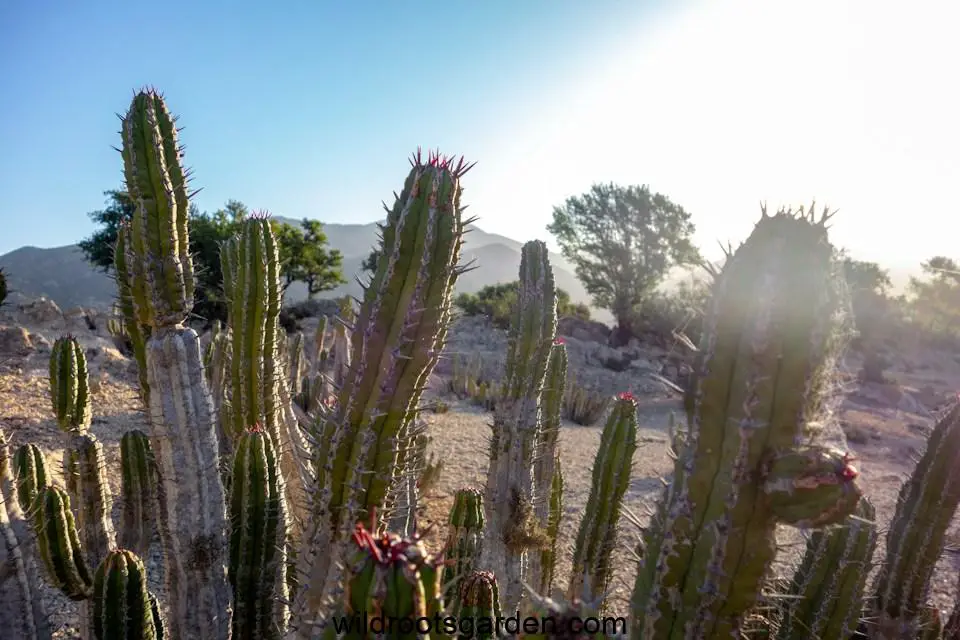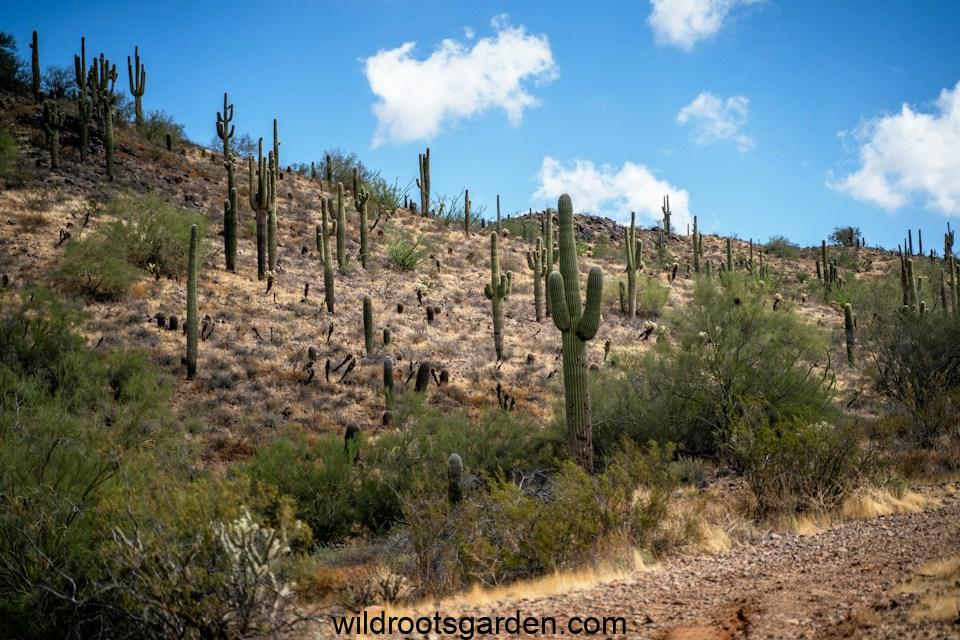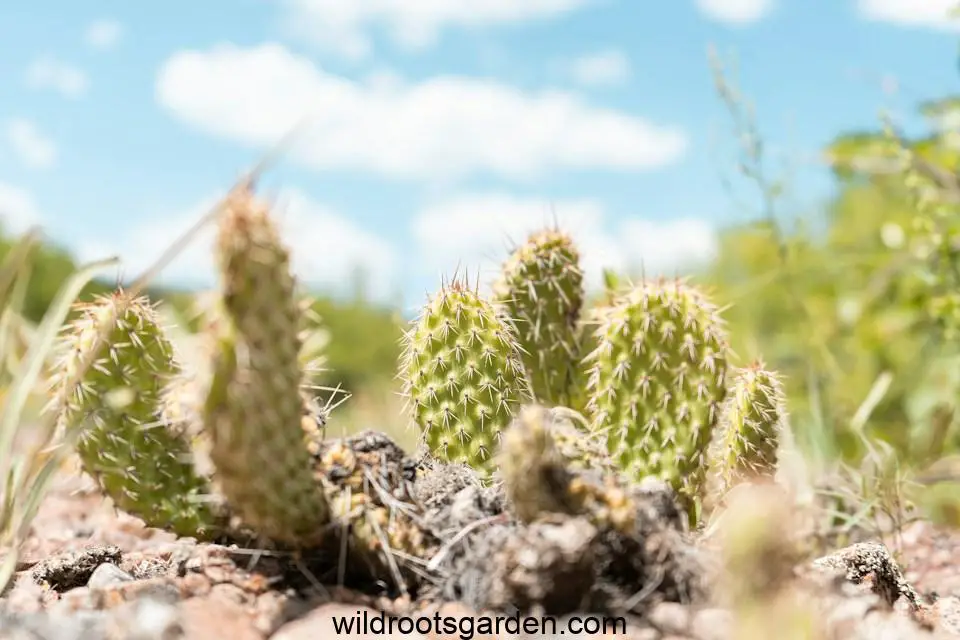Do cactuses do better in dry climates? Cactuses rule the dry climate dance! ☀️ Discover their water-saving secrets, from spiky defenses to hidden oases, and learn why they thrive where others wilt. Cactuses, with their unique and captivating appearance, seem to thrive in the harshest of environments, such as deserts and arid regions. In this article, we will delve into the secret of cactuses and uncover why they are nature’s desert superheroes, perfectly adapted to the dryness and heat of their surroundings.
Do Cactuses Do Better In Dry Climates?

Cacti are the ultimate conquerors of arid environments, having evolved over countless years to endure the severe conditions of their native habitats. Unlike most plants that wilt and decay in the intense sun, cacti have adapted to store water and fight against dehydration. Their succulent stems serve as reservoirs, enabling them to flourish for extended periods without rainfall. This extraordinary capability not only allows cacti to survive but also to thrive in dry climates where other plants falter.
What is the ideal climate for cactus?
The ideal climate for cacti is characterized by specific environmental conditions that allow these unique plants to thrive and flourish. Cacti are well adapted to arid and semi-arid regions, where they have evolved to endure and even thrive in harsh desert-like conditions. This preferred climate encompasses a range of essential factors that contribute to their optimal growth and survival.
Firstly, cacti thrive in regions with abundant sunshine. These plants require ample sunlight to fuel their photosynthesis process and convert light energy into vital nutrients. Consequently, regions with long hours of direct sunlight, such as deserts or arid areas, are particularly suitable for cactus cultivation.
Secondly, cacti prefer warm temperatures. They are adapted to withstand high temperatures during the day. These warm conditions allow for efficient water uptake and evaporation, as cacti store water within their fleshy stems and leaves. Therefore, regions with consistently high temperatures, typically ranging between 70°F (21°C) and 90°F (32°C), are considered ideal for cactus growth.
Furthermore, cacti require well-draining soil to prevent root rot and fungal diseases. Sandy or gravelly soils are preferred, as they allow excess water to drain quickly, preventing waterlogged conditions that can be detrimental to cactus health. In such soils, water is less likely to accumulate around the roots, ensuring the plant’s survival and overall well-being.
In terms of precipitation, cacti thrive in areas with low rainfall. They have adapted to survive in arid environments where water is scarce, making them well-suited for regions receiving less than 20 inches (50 cm) of annual rainfall. These plants have evolved various mechanisms to conserve water, such as their ability to close their stomata (tiny pores on the surface) during the hottest parts of the day to reduce water loss through transpiration.
Lastly, cacti benefit from relatively low humidity levels. High humidity can hinder the plant’s ability to transpire and evaporate water effectively, potentially leading to fungal infections or rot. Therefore, regions with low humidity, typically less than 50%, create an environment conducive to cactus growth and minimize the risk of diseases.
In summary, the ideal climate for cactus cultivation encompasses abundant sunlight, warm temperatures, well-draining soil, low rainfall, and low humidity. These favorable environmental conditions allow cacti to thrive, showcasing their unique beauty and resilience in arid and semi-arid regions around the world.
How do cactus survive in dry climates?

Cacti thrive in arid climates and have evolved adaptations to withstand harsh conditions. One key adaptation is their water storage capabilities. Cacti have succulent stems that efficiently store water, acting as reservoirs during rainfall or high humidity to sustain the plant during drought. They have also reduced leaf size or eliminated leaves to minimize water loss. Spines serve as defense mechanisms, provide shade, and reduce water loss by minimizing exposure to arid air. Cacti use CAM (Crassulacean Acid Metabolism) photosynthesis, opening stomata at night to avoid excessive water loss while absorbing carbon dioxide for photosynthesis. This maximizes water utilization in harsh habitats. Additionally, some cacti have a waxy cuticle on their stems, acting as a barrier against water loss and aiding moisture retention. Certain species have shallow but extensive root systems, allowing quick absorption of available water after rainfall or dew formation to ensure survival during drought.
Can cactus survive in dry soil?
Cacti are renowned for their ability to thrive in dry soil conditions. Their unique adaptations allow them to survive and even flourish in arid environments where other plants struggle to grow. Cacti have evolved specialized features such as thick, fleshy stems and spines that reduce water loss through transpiration. Additionally, their extensive, shallow root systems enable them to quickly absorb any available moisture from the soil. Furthermore, cacti can store water in their stems, allowing them to endure extended periods of drought. These remarkable adaptations enable cacti to not only survive but also thrive in dry soil, making them a symbol of resilience in harsh environments.
Can a cactus survive a drought?
Cacti are resilient plants that evolved to thrive in arid environments and withstand droughts. Their unique physiology enables them to store water in their thick stems and fleshy leaves, allowing them to endure extended periods without rainfall. During droughts, cacti conserve water by closing their pores, reducing transpiration, and limiting moisture loss. Their waxy outer layer prevents evaporation, further aiding their survival. Cacti also have specialized root systems that efficiently absorb water from the ground, even in extremely dry conditions. These adaptations equip cacti to thrive in drought-prone regions.
Is rain bad for cactus?
Rain is not necessarily bad for cacti, but it can pose some challenges for these desert plants. Cacti are adapted to arid climates and are highly efficient in conserving water. Too much rain or prolonged exposure to moisture can lead to overwatering, which can be detrimental to cacti. Excess water can cause the roots to rot and make the plant susceptible to fungal and bacterial infections. Furthermore, heavy rain can cause cacti to become waterlogged and their stems may become soft or even collapse. However, occasional rain showers can be beneficial for cacti as they provide them with much-needed hydration and help flush out salts and minerals that may accumulate in the soil. To ensure the health of cacti, it is crucial to strike a balance between providing adequate water and preventing overwatering during rainy periods.
Do cactus thrive in the desert region?

Cacti are well-known for their ability to thrive in the desert region. Their unique adaptations make them well-suited to the harsh and arid conditions found in this environment. Cacti have evolved to store water in their thick, fleshy stems, allowing them to survive long periods without rainfall. Additionally, cacti have developed spines instead of leaves, which help to reduce water loss through transpiration and protect the plant from herbivores. These adaptations enable cacti to efficiently extract and conserve water from the scarce resources available in the desert, allowing them to flourish and dominate the arid landscapes.
Let’s explore the secret of cactuses!
The secret of cacti lies in their unique anatomy and physiology. Unlike other plants, cacti possess specialized “succulent tissue” in their stems that store water. This tissue absorbs and stores substantial amounts of water. Moreover, cacti have evolved spines instead of leaves, which minimize water loss through transpiration by reducing the exposed surface area affected by the sun. This coupling of water storage and reduced water loss enables cacti to thrive and prosper in arid environments, showcasing their remarkable natural prowess.
Unearthing the truth about cactuses
Cacti are commonly associated with deserts, but they can be found in different arid climates worldwide. From the Sonoran Desert in North America to the Atacama Desert in South America, cacti have demonstrated their resilience and adaptability. Thriving in these harsh environments has established them as enduring symbols of survival. Despite limited resources, cacti have evolved diverse shapes and sizes, suited to their specific surroundings. Their adaptability and versatility in various dry climates make them captivating subjects for botanical investigation.
FAQS ABOUT Do Cactuses Do Better In Dry Climates?
Why is the cactus perfect for the desert?
Cactuses are perfectly adapted to deserts thanks to several key features:
Water storage: Thick, fleshy stems function as water tanks, coated in wax to minimize evaporation.
Reduced leaves: Spines replace leaves, reducing surface area for water loss.
Shallow root systems: Spread wide to absorb quick rainfall and tap into underground moisture.
CAM metabolism: Captures carbon dioxide at night, minimizing daytime water loss during photosynthesis.
Heat tolerance: Reflective coating and spines provide shade and protection from scorching sun.
These adaptations make cactuses water conservation experts, thrive where other plants struggle.
Do cactuses need water in the desert?
Yes, even though they’re adapted to dry climates, cactuses still need water to survive. However, they require much less than other plants due to their water-saving features. Their ability to store water allows them to survive long periods between rainfalls.
How many days can cacti live without water?
The exact timeframe depends on the cactus species, size, and climate. Some desert giants like saguaros can survive years without rain thanks to their impressive water reserves. Smaller cacti or those in harsher environments might last months or even weeks.
Can you drink cactus water?
Technically, yes, some cactus species have edible flesh that contains water. However, it’s generally not recommended because:
Taste: Many cacti have bitter or unpleasant flavors.
Spines: Extracting water can be difficult and dangerous due to spines.
Potential toxins: Some cacti contain toxins that can cause sickness.
If seeking hydration in the desert, it’s safer to stick to established water sources.
What is the lifespan of a cactus?
Cactuses are known for their longevity, with some species living for centuries! Giant saguaros can reach 200 years, while smaller barrel cacti might live 50-100 years. Their slow growth and efficient water use contribute to their impressive lifespans.
Final Words
cactuses are truly nature’s desert superheroes. Their remarkable adaptation to dry climates and ability to store water makes them perfectly suited to survive and thrive in arid environments. From their specialized succulent tissue to their spines that minimize water loss, every aspect of a cactus is finely tuned for survival. So, the next time you wander through a desert or visit a dry, sunny region, take a moment to admire the beauty and resilience of cactuses. These remarkable plants are a testament to the wonders of nature and serve as a reminder that even in the harshest conditions, life can find a way to flourish.

